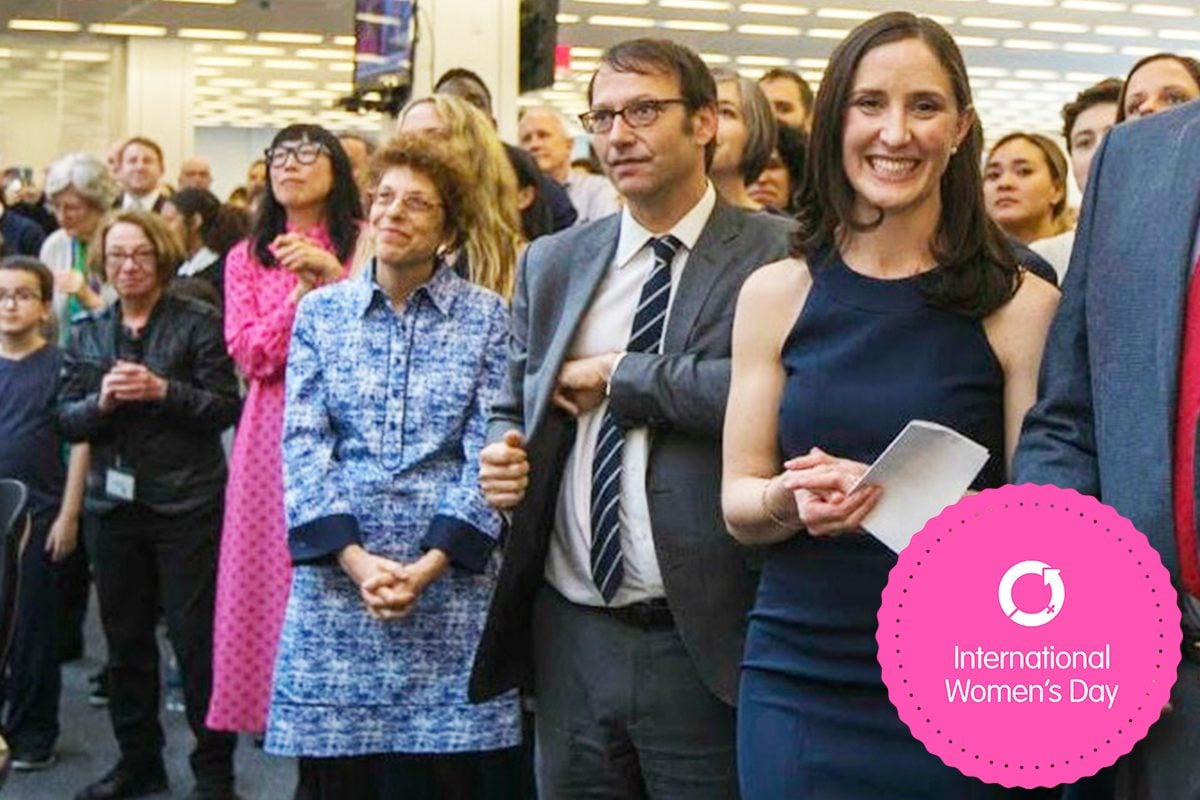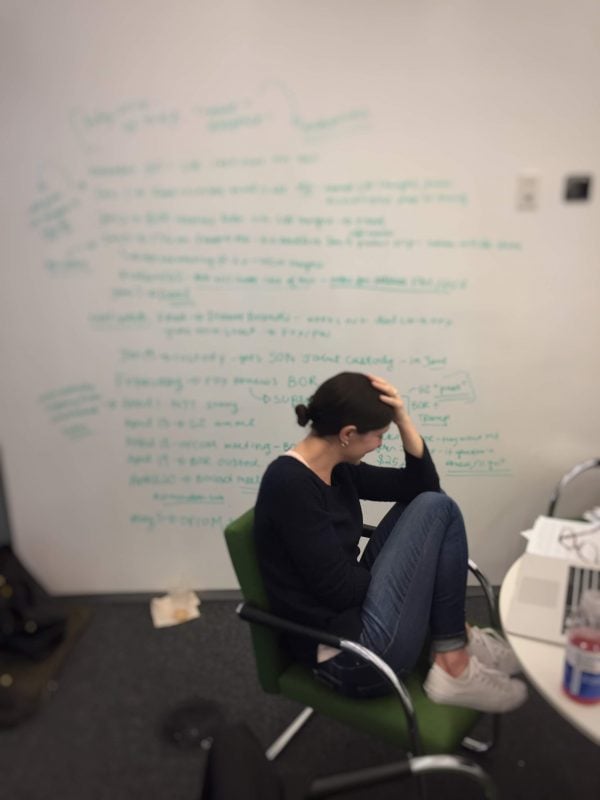
“People usually talk to me when they see me in person. I am not intimidating.”
When American journalist Emily Steel, 33, walked into Mamamia’s office, you could understand immediately how she could have gained her confidants’ trust.
Softly spoken, kind, and fiercely passionate, Emily has the ability to command attention without being bullish, and is in her own words “politely persistent.”
You can listen to Emily’s full interview on The Quicky. Post continues after podcast.
It was perhaps these traits that helped her to uncover and unravel a story that would go on to spark the #MeToo movement and change the way the world looked at sexual harassment.
When you think about #MeToo, Harvey Weinstein might come to mind, but it was actually Emily and her colleagues’ eight month investigative report about Fox news host Bill O’Reilly that changed the game.
Emily went back and found a case of sexual harassment made by a young producer against O’Reilly. It had been settled quietly and had flown under the radar. Until she started digging.
For close to a year throughout 2016 she and a colleague tracked down documents and cases that showed there were at least five other women who had also claimed harassment at the hands of O’Reilly. They’d all been silenced with a total of $45 million worth of payouts.
They interviewed 60 sources, sifted through court papers, called people off IMBD that had been on O’Reilly’s show, knocked on doors and wrote handwritten cards. They were relentless, and it was gruelling, intense work.




Top Comments
MM that video was spot on. Good work, opening people's eyes to the everyday reality in some women's lives.
'What we're going to see now is systemic change. So you see some efforts have been made to change non disclosure agreements, and to look at corporate policies. But as a society we have a far way to go.'
Too true. I was recently sexually harrassed online by a male member of my gym. On two separate occasions he sent me messages on IG telling me that he'd recognised me from the gym and did I want to have sex with him. One of them, received on Christmas Eve, just said, 'Christmas sex? lol.'
I reported this to gym management, and said that it would be great if they could amend their Terms and Conditions to put something in there saying that using social media to threaten, menace or harass fellow gym users was inappropriate. The took two months to get back to me with an actual answer. When they did, they declined my suggestion, saying that they can't control what people do online. I didn't ask for any consequences for this man, didn't ask for him to be banned or suspended, or even spoken to. I just wanted to feel like the gym had my back, and could put something in writing that lets members know that this behaviour is inappropriate.
Since I have no intention of leaving my gym over this, I now have to work out in the same space as a man who sexually harassed me online, and at a gym that clearly doesn't support its female members.
To say that I'm cross about this would be to engage in serious understatement.